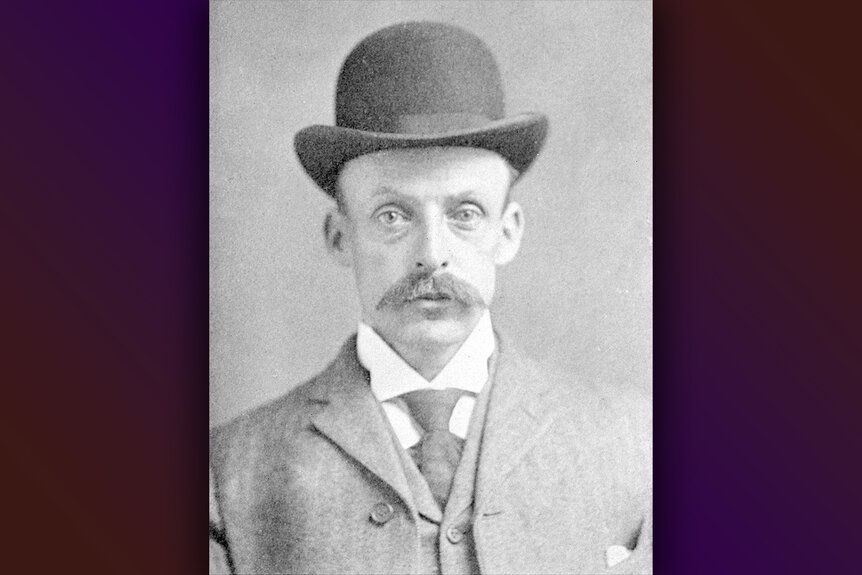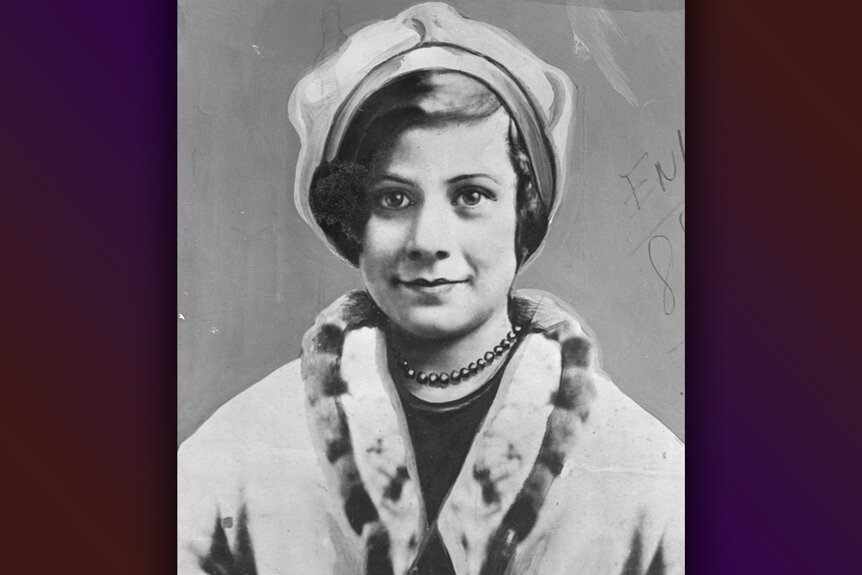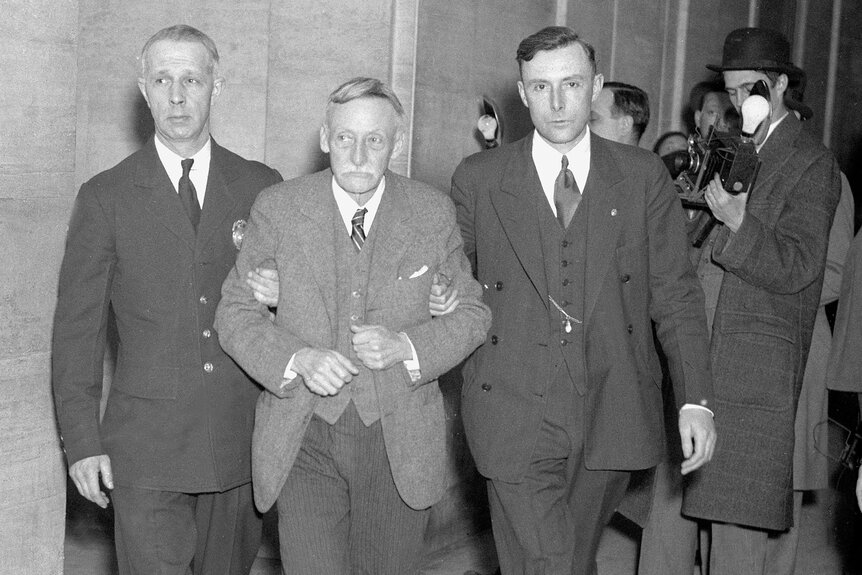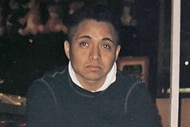Create a free profile to get unlimited access to exclusive videos, breaking news, sweepstakes, and more!
How Child Killer Albert Fish Was Caught by New York Police
The 65-year-old man's family was not the least bit surprised when he was arrested for Grace Budd's murder.

Albert Fish is one of the scariest serial killers you've never heard of.
The 65-year-old man was executed by electric chair at New York's Sing Sing for murdering 10-year-old Grace Budd in 1928 after befriending the child's family. It was a six-year mystery that haunted Grace's parents, who felt immense guilt for trusting a random gray-haired figure to take their daughter under the guise of attending a birthday party. As the years went by, they held out hope they'd be reunited with their darling daughter, praying that she was secretly being raised in a different city.
RELATED: Serial Killers Everywhere? Here Are Some Of Your Favorite True Crime Myths Debunked
But those hopes were dashed when they received a now-infamous letter from the killer himself in November of 1934, detailing Fish's crimes.
"The blood lust seized me," he reportedly wrote, according to the Bethelehem Globe-Times. "But I'm glad it's over now. Helping the police find the body somehow makes me feel better."
Keep reading to find out how detectives found Fish through the depraved letter.
Who is Albert Fish?
Born Hamilton Howard "Albert" Fish in May 1870, he was the youngest child in his family but was abandoned at an orphanage by his mother Ellen following his father's death in 1875, according to Harold Schechter's book Deranged: The Shocking True Story of America's Most Fiendish Killer. It was at the Saint John's Orphanage in Washington D.C. that a 5-year-old Fish began to develop his bloodlust.
"While there, he was subjected to all manners of physical and sexual abuse and humiliation and torture, which completely warped his personality out of shape. It turned him into the kind of monstrous being that he was,” Schechter told WTOP News.
Though Fish didn't spend all his youth in the orphanage — his mother returned for him when he was 10, according to Schechter — it made a lasting impact on the young boy. Fish associated the pain he experienced with pleasure, causing him to later inflict pain upon himself. Psychiatrist Fredric Wertham's research, now stored in the Library of Congress, includes a now-infamous X-ray of Fish's pelvic area and groin, in which the killer had inserted 27 needles.
Fish later moved to New York City, where it's believed he began his criminal career. He started out by raping and molesting young boys before graduating to murder, though it's unclear who his first victim was and how many there were. Additionally, he committed smaller crimes, including grand larceny, for which he was arrested and incarcerated in 1903, according to a December 1934 Brooklyn Times Union article.
More than a decade earlier, Fish had married Anna Mary Hoffman, as coordinated by his mother. The couple went on to have six children before their separation in 1917, the Times Union reported.
How was Albert Fish caught?
Fish's crimes continued to increase in depravity as he got away with more and more attacks on children. By 1928, he was taking children in plain sight, though this would lead to his eventual capture.
It all began when Fish saw an advertisement posted by Edward Budd, a teen seeking work in the country, prompting him to approach the boy's family in May 1928. Fish told the Budds that he was Frank Howard, a 58-year-old farmer from Westchester, New York, according to the Brooklyn Times Union. After establishing a relationship with the Budds, Fish asked to take their 10-year-old daughter, Grace Budd (Edward's sister), to a party for his niece and the parents agreed. She'd never be seen again.
Through the course of the investigation, two men were arrested and one was even acquitted of Grace's murder, the Brooklyn Times Union reported.
It took six years for detectives to capture Fish, who ultimately gave himself up through incriminating letters to the Budd family. One letter written to the Budds on November 11, 1934 bore the insignia of the New York Private Chauffeurs Benevolent Association, prompting investigators to question some of its members, according to the Brooklyn Times Union. One member told investigators he had left some envelopes at a boarding house where he previously resided, so the detectives went to the boarding house and searched the building's register for similar handwriting, leading them to Fish.
Upon questioning, Fish immediately confessed to Grace's murder. A detective told the Brooklyn Times Union that Fish shared explicit details about the murder, which took place in an abandoned Westchester home.
"He took Grace to a room one flight up and after a little while told her to go out on the lawn and pick wild flowers," the detective told the newspaper. "A few minutes later he called Grace to come back again. Fish confessed that he seized her and choked her and cut her throat."
Following the murder, Fish dismembered the 10-year-old and buried her body near the home. Detectives were able to locate her skull where he said it was.
"We had always hoped, somehow, that she might still be alive somewhere," Grace's mother said. "We were hoping that the man who took her might be bringing her up. If I could only lay my hands on that man."
RELATED: For Fans of 'Yellowjackets', Some Real Life Cases Of Cannibalism To Sink Your Teeth Into
Fish claimed to dismembered and roasted Grace's body and eaten her over the course of a week in the November 1934 letter, according to Schechter's Deranged, though it's unclear if he actually did.
When Fish's family learned that he was arrested for Grace's murder, they hardly reacted. His eldest son Albert Fish Jr. told the Brooklyn Daily Eagle in December 1934, "The old skunk, I knew something like this would happen sooner or later."
Fish's Other Crimes
Following his arrest, Fish was tied to the murders of Francis McDonnell and Billy Gaffney.
According to a report by the New York Daily News, a man saw 8-year-old Francis following an elderly man into the woods in July 1924. Francis was later found hanging by his own suspenders from a tree in Staten Island, badly beaten and mutilated. Fish denied involvement in the crime but a neighbor identified him as a man he had chased from his farm around the same time that McDonnell had disappeared, the New York Times reported in December 1934.
Francis' mother is credited with giving Fish the name "The Gray Man," according to the Toronto Sun. When speaking to police, Anna McDonnell gave this description of the attacker: "He came shuffling down the street mumbling to himself and making queer motions with his hands... I saw his thick grey hair and his drooping grey mustache. Everything about him seemed faded and grey," the Sun reported.
RELATED: What is Murderabilia? The Strange Allure Of Artifacts From Serial Killers, Explained
Fish was later identified as the man seen with missing 4-year-old Billy Gaffney, who had disappeared from his Brooklyn home in February 1927. Brooklyn District Attorney Charles Dodd told the New York Daily News in March 1927 that he spoke with Billy's neighbors, who reported seeing the child moments before he was taken.
"Their most remarkable disclosure was that Billy Gaffney vanished within three minutes. Mrs. Cordovez saw him playing in the fourth floor of the building where he lived at 5:30 p.m.," Dodd told the newspaper. "Not more than three minutes later, Beaton looked there and the child was gone."
At this time, mothers were afraid for their children as young boys were being taken from their homes, only to be found dead days later. "He was really the living incarnation of every parent’s worst nightmare and every child’s worst nightmare. What the Boogeyman is,” Schechter told WTOP News.
Of course, Fish wasn't responsible for every disappearance. Amid the search for Billy, a 5-year-old boy was nearly kidnapped by Louis Sandman, who was then attacked by a mob of angry mothers, the New York Daily News reported in a separate March 1927 article.
"The hunt for little Billy Gaffney took new life yesterday as a mob of screaming Brooklyn mothers, for the second time in five days, sought to beat down a suspected kidnaper. Less than a mile from the Gaffney home at 138 Warren St., the women clawed and spat at Louis Sandman, 42, caught in the act of dragging 5-year-old Frank Malerba into a dim hallway," the newspaper recalled.
Billy's body was never found, but Fish was identified as a suspect by a streetcar motorman who claimed to have seen an older man forcing the boy into a trolley the night the 4-year-old had disappeared, according to a December 1934 article by the Asbury Park Press.
Fish's Execution
Fish pleaded not guilty by reason of insanity, with three experts, including psychologist Fredric Werthram, testifying that he was not of sound mind at the time of Grace's murder, the New York Times reported. They pointed out that Fish had a sick idea of pleasure and was sadistic, as evident in the X-rays of Fish's needle-ridden pelvic area, but experts for the prosecution said that an individual can do bad things and still be sane.
Ultimately, Fish was found guilty of murder and sentenced to death. And while numerous outlets made salacious claims about Fish's last words — one tabloid said he declared, "I don't know why I'm here. Everything seems so hazy." — the New York Times reported that Fish quietly sat on the execution chair on the evening of January 16, 1936.
















